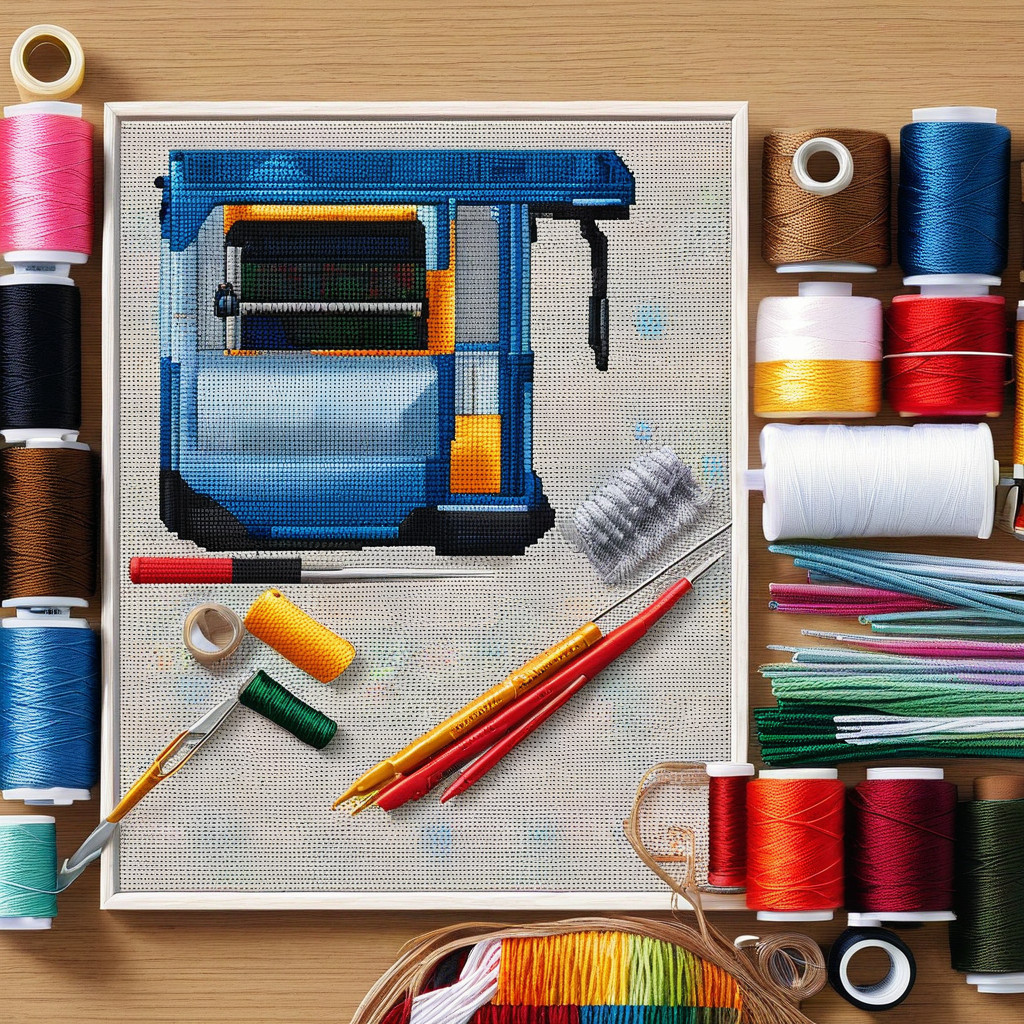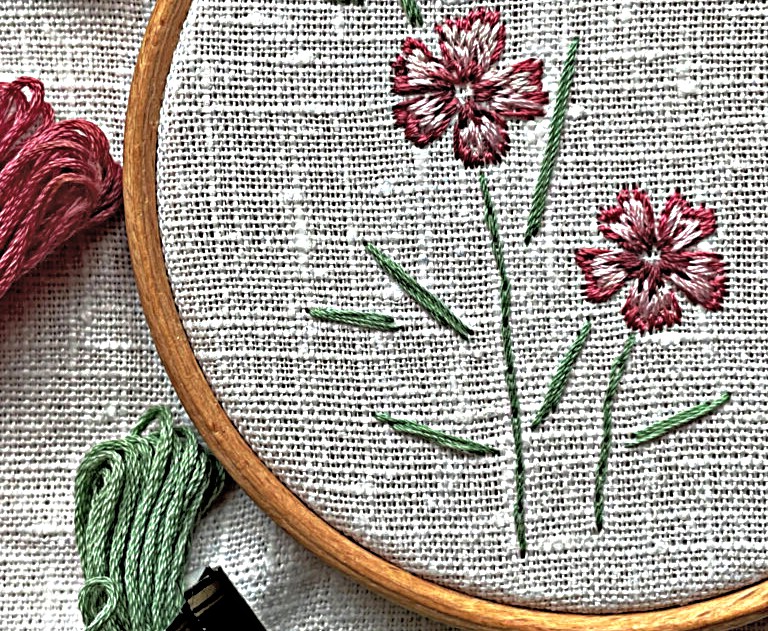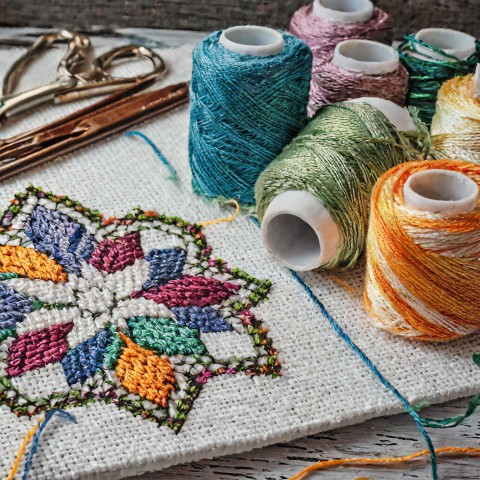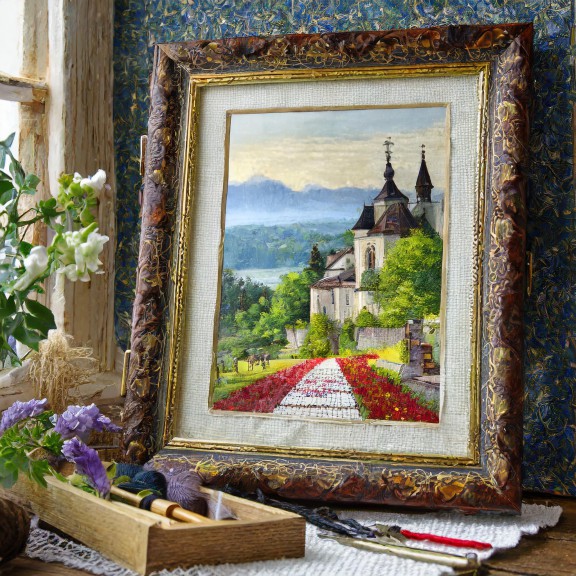Introduction to Cross Stitch as an Enduring Craft

Cross stitch, a timeless and enduring craft, has woven its way through centuries, providing individuals with a creative outlet and a connection to a rich historical tradition. For novices looking to delve into the world of needlework, cross stitch serves as an ideal starting point. This comprehensive guide aims to unravel the basics of cross stitch, equipping beginners with the knowledge and confidence to embark on their stitching journey.
Why Cross Stitch is a Great Starting Point for Crafting Beginners
- Simple and Structured: Cross stitch involves creating ‘X’ stitches on fabric, making it a straightforward and structured craft, perfect for those new to needlework.
- Economical Entry Point: With minimal investment in tools and materials, beginners can start their cross stitch journey without breaking the bank.
- Relaxing and Therapeutic: The repetitive nature of cross stitching offers a therapeutic experience, promoting relaxation and mindfulness.

Understanding the Essential Tools and Materials
- Aida Fabric: Aida fabric is a popular choice for beginners due to its clear grid pattern, making it easy to count stitches.
- Embroidery Floss: Vibrant threads that bring your stitches to life, embroidery floss is available in a spectrum of colors.
- Cross Stitch Needles: Blunt-tipped needles designed for cross stitch prevent snagging and ensure smooth stitching.
- Hoop or Frame: A hoop or frame keeps the fabric taut, facilitating easier and more precise stitching.
The Importance of Starting with Simple Patterns

- Building a Foundation: Simple patterns help beginners build a strong foundation by focusing on basic stitches and techniques.
- Boosting Confidence: Success with uncomplicated designs boosts confidence, motivating beginners to take on more complex projects.
- Understanding Symbols: Simple patterns typically use fewer symbols, making it easier for beginners to understand and follow the instructions.
Selecting Your First Cross Stitch Project
Criteria for Choosing Beginner-Friendly Designs
- Limited Colors: Opt for patterns with a limited color palette to simplify thread selection.
- Clear Instructions: Choose patterns with clear and detailed instructions to guide you through each step.
- Minimal Backstitching: Avoid patterns with extensive backstitching, as it can be challenging for beginners.
Exploring Various Sources for Cross Stitch Patterns
- Online Platforms: Websites like Etsy, Pinterest, and cross stitch forums offer a plethora of free and paid patterns.
- Books and Magazines: Cross stitch books and magazines often feature beginner-friendly patterns with step-by-step instructions.
- Design Your Own: Experiment with creating simple patterns to personalize your cross stitch projects.
The Role of Color and Complexity in Your First Project
- Understanding Color Theory: Familiarize yourself with color theory to make informed choices about thread colors in your project.
- Balancing Complexity: While simplicity is key, introducing a bit of complexity in your first project helps expand your skills gradually.
Inspirational Ideas for Your First Cross Stitch Piece
- Personal Interests: Choose a pattern based on your interests, such as animals, quotes, or geometric shapes.
- Gift Ideas: Consider creating a cross stitch piece as a personalized and heartfelt gift for a loved one.
Step-by-Step Guide to Your First Cross Stitch

Preparing Your Cross Stitch Materials and Workspace
- Organize Your Materials: Lay out your fabric, threads, needles, and any other necessary tools.
- Set Up Your Workspace: Choose a well-lit and comfortable space for stitching.
Detailed Walkthrough of Basic Cross Stitch Techniques
- Starting with a Knotless Beginning: Anchor your thread without a knot for a cleaner finish.
- Making a Basic Cross Stitch: Master the foundational ‘X’ stitch with a detailed walkthrough.
- Securing the Last Stitch: Ensure your stitches endure by mastering the art of securing the last stitch.
Tips for Threading the Needle and Selecting Floss
- Threading the Needle: Use a needle threader or practice techniques for threading the needle with ease.
- Selecting Floss: Experiment with different thread counts and types to understand their impact on your stitching.
How to Read and Follow a Cross Stitch Pattern
- Understanding Symbols: Decode the symbols on the pattern key to know which color corresponds to each symbol.
- Following the Grid: Use the grid on the pattern to count stitches and ensure accurate placement.
Growing Your Cross Stitch Skills

Encouragement to Experiment and Learn from Mistakes
- Embrace Creativity: Experiment with variations and don’t be afraid to add your unique touch to patterns.
- Learn from Mistakes: Understand that mistakes are part of the learning process, and each one presents an opportunity to refine your skills.
Resources for Continued Learning and Skill Improvement
- Online Tutorials and Courses: Explore online tutorials and courses for in-depth guidance on advanced techniques.
- Crafting Blogs and Magazines: Stay updated on the latest trends and tips through crafting blogs and magazines.
Joining a Community: The Benefits of Sharing Your Journey
- Online Forums and Social Media Groups: Connect with fellow cross stitch enthusiasts, share your progress, and seek advice.
- Local Stitching Groups: Join local stitching groups or organize meet-ups to foster a sense of community.
Setting Attainable Goals for Your Next Cross Stitch Projects
- Gradual Complexity: Set goals to gradually increase the complexity of your projects as you gain confidence.
- Project Themes: Experiment with different themes and styles to keep your stitching journey exciting.
In conclusion, unraveling the basics of cross stitch for novices involves understanding the craft’s appeal, selecting the right tools and materials, and embarking on your first project with confidence. Whether you’re aiming for simplicity or exploring more complex designs, the key is to enjoy the process and embrace the learning journey. Happy stitching!

